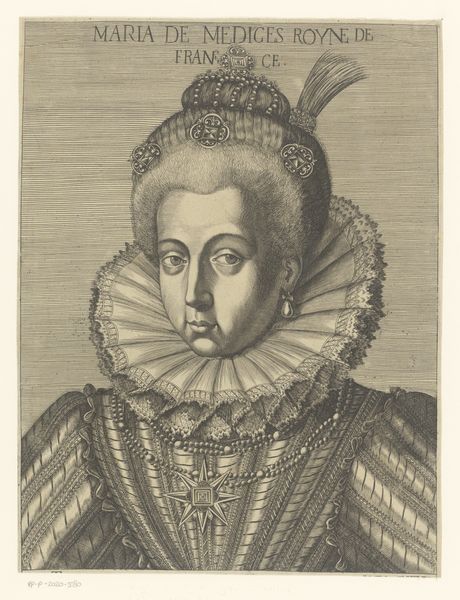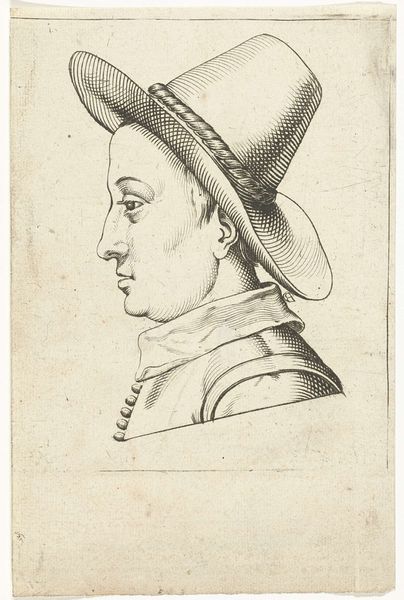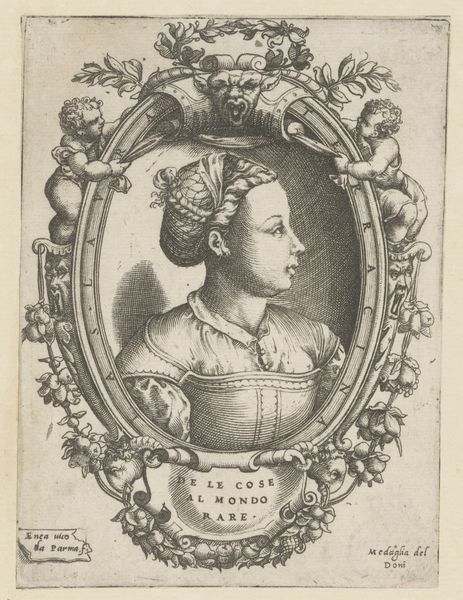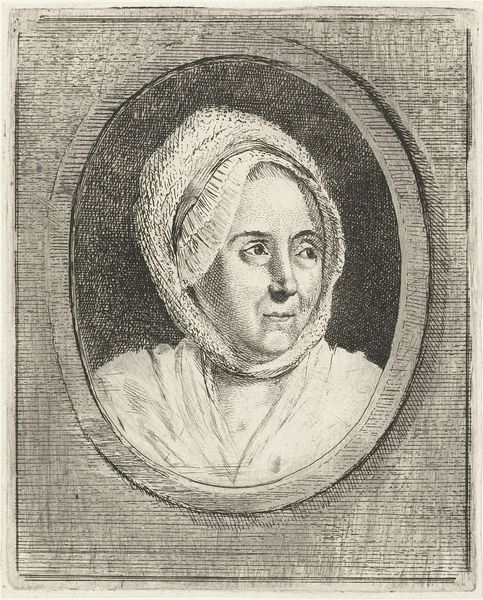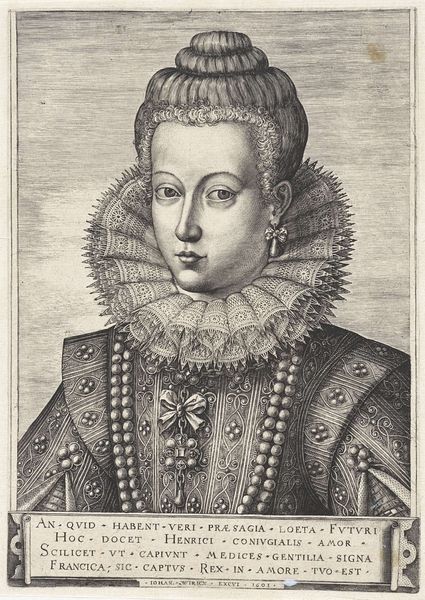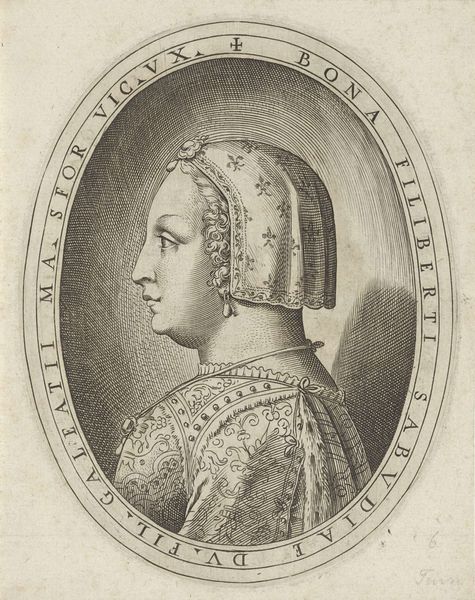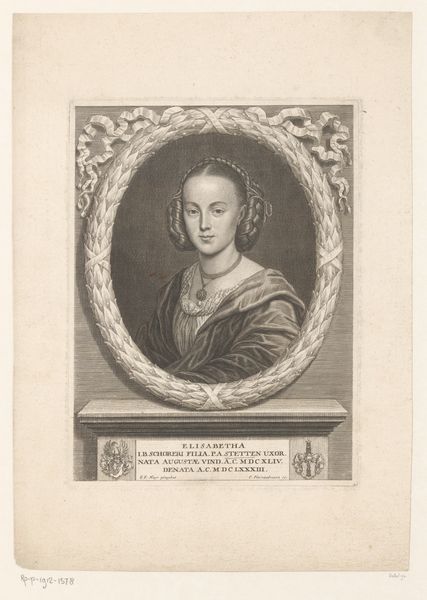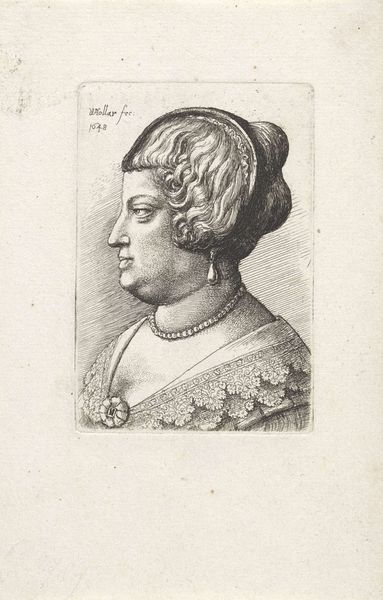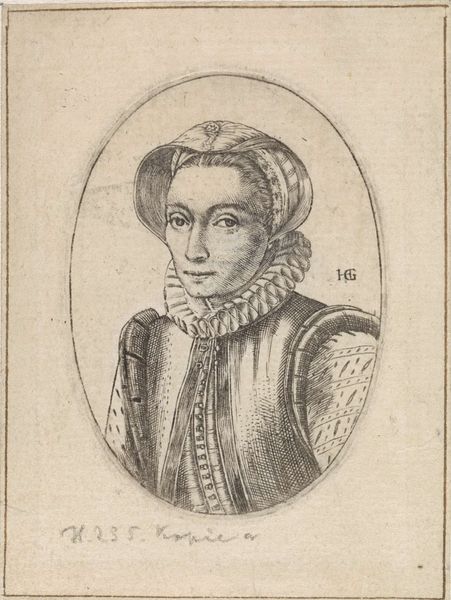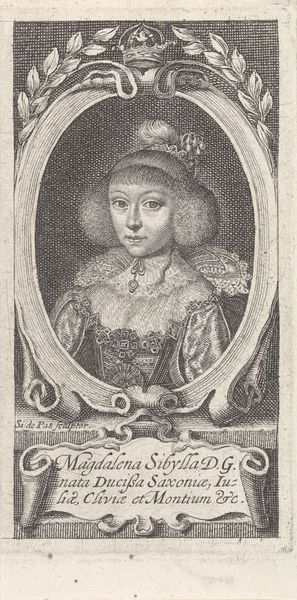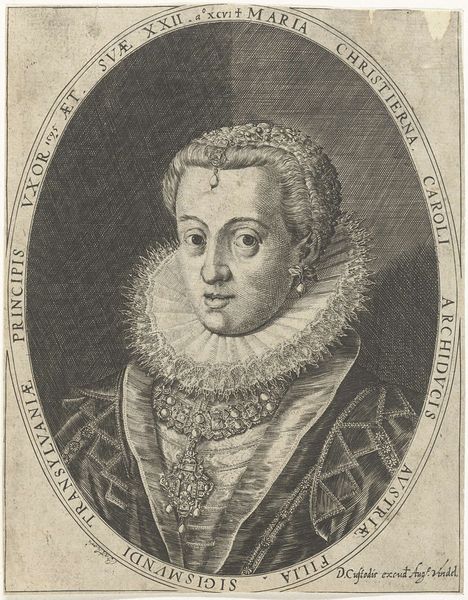
print, metal, engraving
#
portrait
# print
#
metal
#
old engraving style
#
mannerism
#
engraving
Dimensions: height 151 mm, width 115 mm
Copyright: Rijks Museum: Open Domain
Curator: We are looking at Agostino Carracci's "Portret van Christina van Denemarken", dating from between 1567 and 1602. It’s currently held here at the Rijksmuseum. Editor: My first impression is that of solemnity, even severity. The framing oval, combined with the subject’s direct gaze, creates a rather intense encounter. Curator: Carracci's Mannerist approach is evident in the refined lines and attention to detail. The engraving, a printmaking technique using metal plates, allows for incredibly precise articulation of texture and form. Note, for instance, the rendering of fur in her stole. Editor: Absolutely. And considering Christina of Denmark, was a powerful figure who navigated complex political landscapes during the Renaissance. We see the layering of fur, beads, intricate designs embroidered upon her clothes– all markers of status and power within a patriarchal society. Did the commission dictate a level of restraint or idealization for this kind of political symbol? Curator: It's reasonable to think the print may have served diplomatic purposes. However, structurally, I would call attention to how the composition focuses almost entirely on the subject's face. The lines emphasize clarity and idealized features to draw us into an immediate awareness of proportion, line, and balance. Editor: Perhaps. But I still find it vital to explore what these highly structured visual devices signify, beyond formal elements. Was there an element of resistance in Christina’s story, an active push against constricting gender roles that might be mirrored or challenged in her portraits? Did Carracci make decisions with intent to convey emotion through facial cues? It looks like a very closed face to me, but the context in which it was created certainly impacted the engraving’s intent, for viewer and subject alike. Curator: That’s a great question to bring forward. Considering the period it comes from, I think an exclusively aesthetic understanding may obscure greater considerations about representation and identity that speak volumes to modern viewers. Editor: Exactly. Works of art should spark dialogue and question existing conventions to unveil potential social implications beyond technique and materiality. Thank you.
Comments
No comments
Be the first to comment and join the conversation on the ultimate creative platform.

